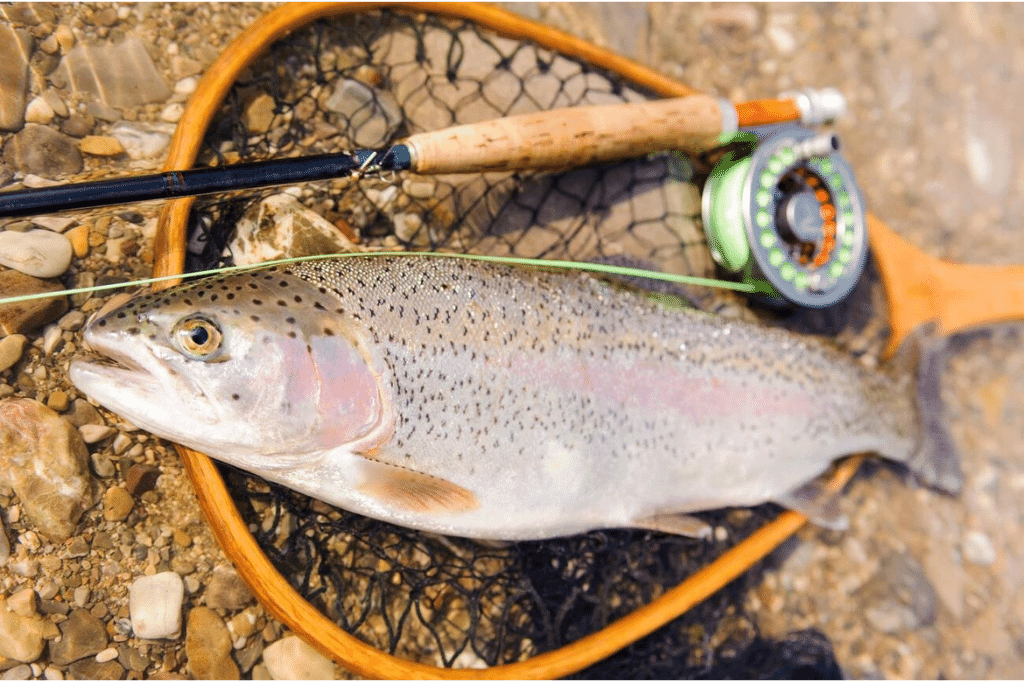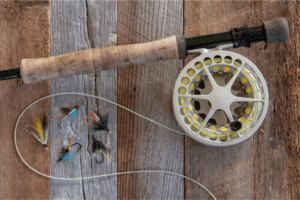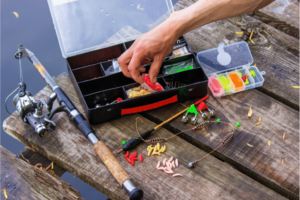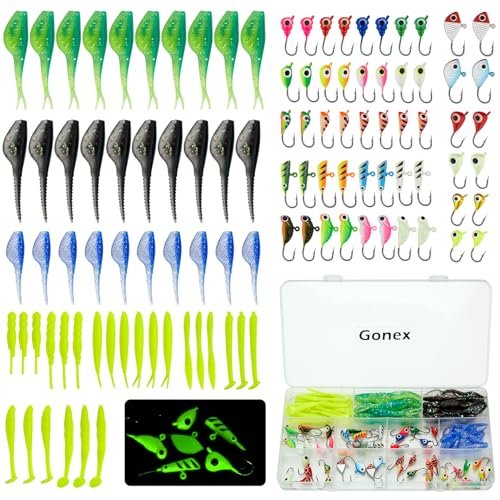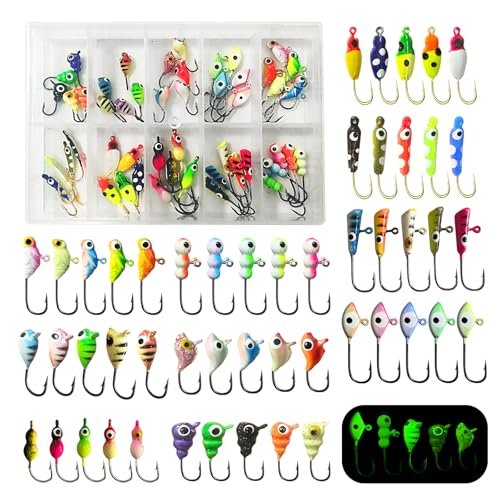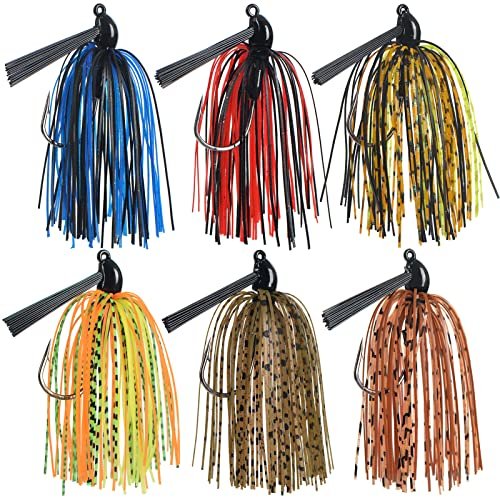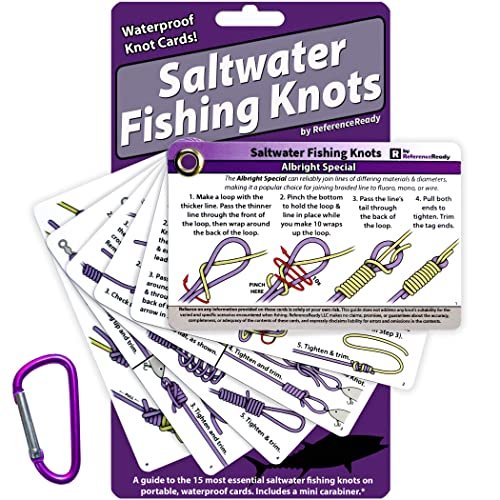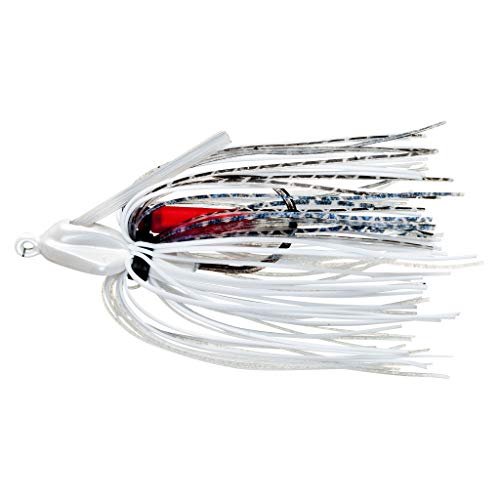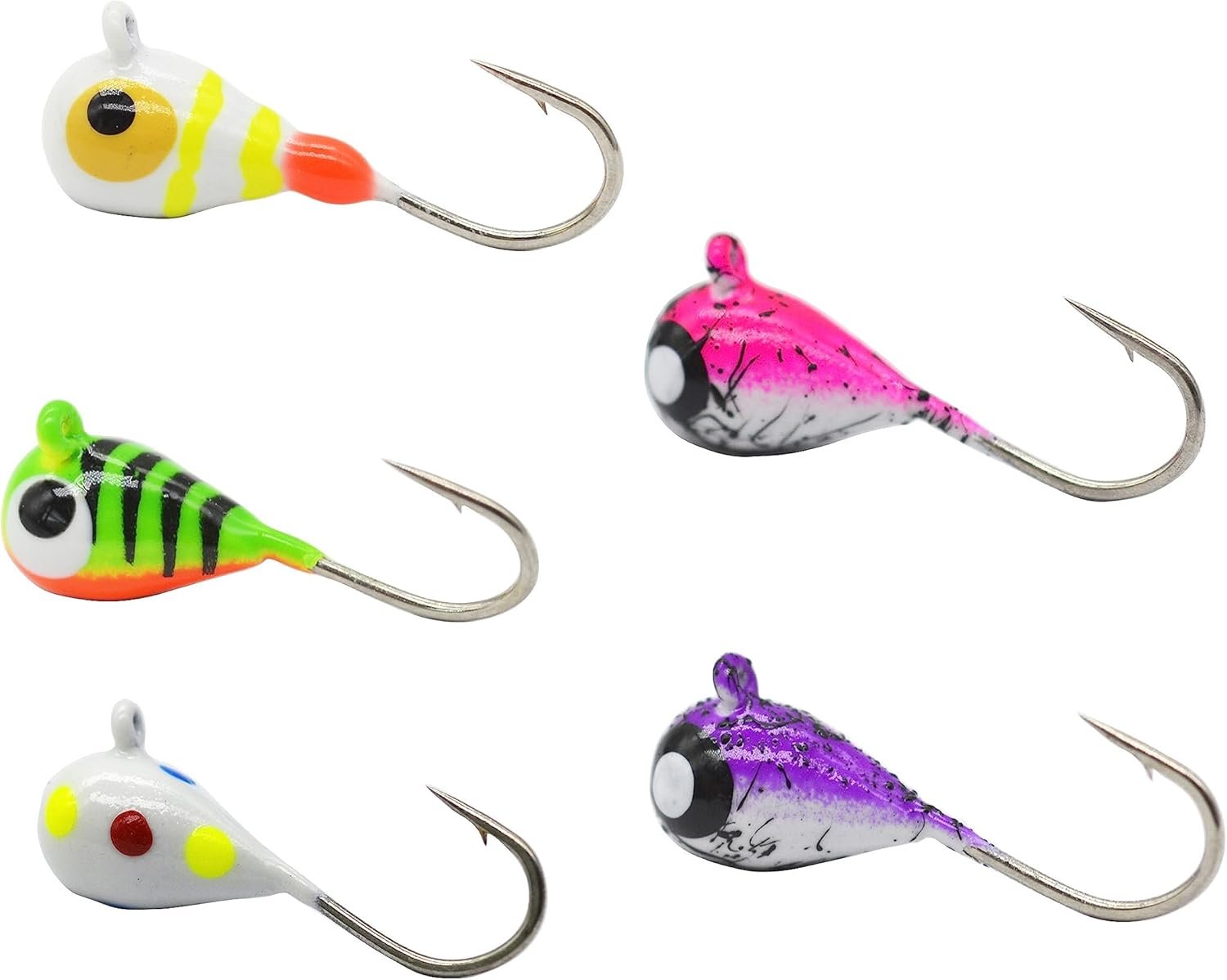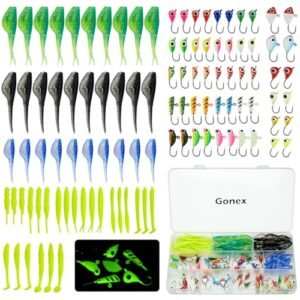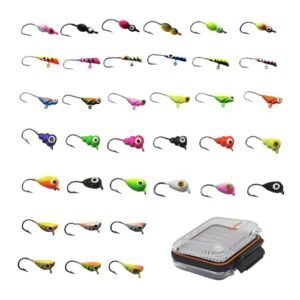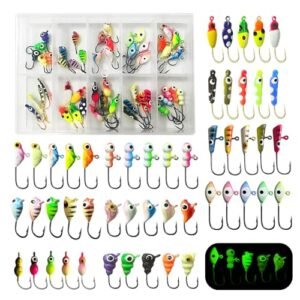Trout Fishing Gear-Embarking on a trout fishing adventure requires specific gear to maximize your chances of a good catch. A lightweight, sensitive rod paired with a smooth reel allows for accurate casting and delicate presentations, crucial in trout fishing. Your choice of line – typically a fine, strong monofilament or fluorocarbon – is pivotal, as trout are often line-shy.
A variety of lures and flies, ranging from spinners to soft plastics to dry and wet flies, cater to different trout species and water conditions. A sturdy yet gentle net assists in safely landing your catch, while waders grant you access to the best spots without getting soaked. Lastly, a well-organized tackle box keeps your gear accessible and in top condition. By equipping yourself with the right gear, you set the stage for a rewarding trout fishing experience.

Gearing Up For Trout: The Essentials
Excitement builds with the thought of landing a shimmering trout. Proper gear makes all the difference. In this guide, we’ll cover the essentials you need for a successful trout fishing trip. Let’s dive into the specifics of rods, reels, lines, and leaders.
Rod And Reel: Matching Your Tackle
Selecting the right rod and reel is crucial. Light to medium-light rods are best for trout. They provide the right balance of sensitivity and power. Your reel should match your rod’s weight. A smooth, reliable drag is a must to handle sudden runs. Choose a reel that feels comfortable and balances well with your rod.
Line And Leader: The Connection To Success
The right line and leader are your direct link to the trout. A monofilament line in the 4-6 lb test range is ideal for starters. It offers good control and is forgiving with knots. For leaders, fluorocarbon is a popular choice. It’s nearly invisible underwater, giving you an edge. A 2-4 lb test leader works well. It’s thin yet strong enough to hold a big fish.
| Gear Type | Recommended Specs |
|---|---|
| Rod | Light to Medium-Light |
| Reel | Matched to Rod Weight, Smooth Drag |
| Line | 4-6 lb Monofilament |
| Leader | 2-4 lb Fluorocarbon |
- Choose a rod that’s sensitive and strong.
- Match your reel to your rod for best performance.
- Select a line that’s versatile for various conditions.
- Opt for a leader that’s nearly invisible to trout.
Trout Lures And Baits: Making The Right Choice
Every trout angler knows the thrill of the catch starts with the right gear. Choosing the perfect trout lure or bait is crucial. It could mean the difference between a successful haul and going home empty-handed. Let’s dive into the world of trout lures and baits to ensure your tackle box is stocked with the best options for your next fishing adventure.
Artificial Lures: Types And Tips
Artificial lures mimic the movement and color of trout prey. They come in many shapes and sizes. Each type serves a specific purpose depending on the fishing conditions and trout species.
- Spinners: Flash and vibration attract fish. Ideal for covering large areas of water.
- Spoons: Wobbling action simulates injured baitfish. Great for deeper water.
- Soft Plastics: Lifelike texture. Use with jig heads for precision.
- Crankbaits: Diverse depth range. Match the hatch by selecting the size and color that resemble local prey.
When using artificial lures, pay attention to retrieval speed. Trout can be picky. Sometimes a slower, more methodical approach works best. Other times, quick and erratic movements get bites. Experiment to find what works for the trout in your area.
Natural Baits: What Works Best For Trout
Natural baits are often irresistible to trout because they offer the real flavors and scents of their natural diet. Live baits are particularly effective as they move naturally in the water, enticing trout to bite.
| Bait Type | Why It Works | Best Used In |
|---|---|---|
| Worms | Trout favorite, natural wriggling motion | Streams and lakes |
| Minnows | Imitates small fish, active swimming | Still water, trolling |
| Insects | Part of trout’s diet, surface or sub-surface | Topwater, clear streams |
| Cheese | Strong scent, stays on the hook well | Stocked ponds, murky waters |
For natural baits, freshness is key. Always use the freshest bait possible. This ensures the scent and texture are most appealing to trout. Hook your bait in a way that allows it to move freely. This will create a natural presentation that trout can’t resist.
Hooks And Sinkers: Small Details, Big Impact
Think of trout fishing gear as a puzzle. Each piece is crucial. Hooks and sinkers may seem small. But they make a huge difference. The right ones can turn a slow day into a great catch. Let’s dive into the world of hooks and sinkers. Learn how these tiny tools can have a big impact on your fishing success.
Hook Selection: Size And Shape Matter
Choosing the right hook is vital. The size and shape of the hook affect your catch. Trout have delicate mouths. So, small and sharp hooks work best. Here’s a breakdown:
- Smaller hooks (sizes 10-14) are less visible to trout.
- Wider gaps help in securely hooking the fish.
- Long-shank hooks are easier to remove.
- Barbless hooks cause less damage to the fish.
Sinker Types: Balancing Your Line
Sinkers help keep your bait at the right depth. A balanced line casts better. It also improves bait presentation. Check out these common sinker types:
| Type | Use |
|---|---|
| Split Shot | Easy to add, good for small adjustments. |
| Dipsey | Larger, for deeper or faster waters. |
| Slip Sinkers | Good for a smooth drag on the bottom. |
| Egg Sinkers | Ideal for still waters or slow currents. |
Match the sinker to your fishing conditions. Adjust the weight as needed. Remember, the right gear makes all the difference.
Floats And Bobbers: Keeping Your Bait In The Strike Zone
Floats and bobbers are essential tools for successful trout fishing. They help keep your bait at the perfect depth, making it easier to catch fish. By staying in the strike zone, your chances of catching trout increase significantly. Let’s explore how to choose the right float and set the depth correctly.
Choosing The Right Float
Selecting the ideal float or bobber can make a big difference in your fishing success. Here are some key points to consider:
- Material: Floats made from balsa wood are very sensitive and light.
- Size: Choose a size that matches your bait and fishing conditions.
- Shape: Pear-shaped floats are great for deeper water.
- Color: Bright colors are easier to see in various lighting conditions.
Matching the float to your fishing environment and target fish ensures the best performance.
Setting Depth: Maximizing Bite Chances
Adjusting the depth of your float is crucial for keeping bait in the strike zone. Follow these steps:
- Measure: Start by measuring the depth of the water with a depth finder.
- Adjust: Set the float to 90% of the water depth to keep bait near the bottom.
- Test and retest: If bites are scarce, adjust the depth slightly.
This method greatly enhances your chances of attracting and catching trout.
Using the right float and setting the correct depth are simple yet effective strategies in trout fishing. They ensure your bait remains visible and appealing to fish, directly increasing your success rate.
Waders And Boots: Staying Dry And Safe
Every trout angler knows that the right gear can make or break a fishing trip. Waders and boots are essential components for any angler looking to stay dry while wading through rivers and streams. Safety and comfort are paramount, and choosing the best waders and boots is critical for a successful day of trout fishing.
Selecting The Right Waders
Finding the perfect pair of waders is all about matching your needs to the features available. Here are some key aspects to consider:
- Material: Options include breathable fabrics, neoprene, and rubber.
- Type: Chest, waist, or hip waders, depending on water depth and weather.
- Fit: Ensure a snug fit for insulation and movement without being too tight.
- Durability: Look for reinforced areas that endure frequent contact with water and terrain.
Boot Features: Grip And Comfort
Boots must provide excellent grip and comfort. Key features to focus on include:
| Feature | Description |
|---|---|
| Sole Type | Rubber for grip, felt for slippery surfaces, studded for extra traction. |
| Support | Ankle support is crucial for stability on uneven riverbeds. |
| Fit | Room for waders, but snug to prevent slipping inside the boot. |
| Insulation | For cold waters, insulated boots keep feet warm. |
Always try boots on with waders to ensure the right fit and maximum comfort for long hours of fishing. Safety should never be compromised, so invest in quality gear that will keep you dry and stand the test of time.
The Angler’s Toolbox: Accessories For Efficiency
Welcome to The Angler’s Toolbox: Accessories for Efficiency, a deep dive into the gear that can transform your trout fishing experience. Effective accessories enhance not only your chances of a great catch but also ensure a smooth and enjoyable fishing adventure. Here, we’ll explore essential tools that promise to bring both convenience and effectiveness to your fishing trips.
Fishing Pliers And Scissors
Fishing pliers and scissors are must-haves for any angler. They serve multiple purposes:
- Removing hooks from the fish’s mouth safely.
- Cutting through line and leaders swiftly.
- Bending wires and crimping split-shot weights.
Select pliers with non-slip grips and corrosion-resistant materials. Scissors should be sharp, with fine tips for precision.
Net And Stringer: Securing Your Catch
Once you’ve hooked a trout, the next step is to secure it. A net and a stringer are indispensable:
| Accessory | Function |
|---|---|
| Net | Gently scoop fish from water |
| Stringer | Keep catch alive in water |
Choose a net with a soft, knotless mesh to protect the fish’s slime coat. A stringer should be durable and easy to use for efficiency.
Clothing And Protection: Dressing For The Occasion
Trout fishing demands specific clothing for both comfort and protection. Whether battling sun, wind, or rain, proper attire ensures an enjoyable and safe fishing trip. Let’s explore optimal clothing choices.
Layering For The Weather
Layering is essential for adjusting to changing weather conditions during a trout fishing expedition. Here’s how to layer effectively:
- Base Layer: Start with a moisture-wicking fabric to keep skin dry.
- Mid Layer: Add a fleece or wool sweater for insulation.
- Outer Layer: Top it off with a waterproof jacket to stay dry.
This combination allows for easy adaptation to both rising and falling temperatures.
Sunglasses And Hats: Shielding From The Elements
Protecting your eyes and face is crucial while fishing. Here’s what you need:
- Sunglasses: Polarized sunglasses reduce water glare, protecting eyes and enhancing visibility.
- Hats: A wide-brimmed hat guards against sunburn and keeps rain away from the face.
These items not only offer protection but also improve fishing effectiveness by reducing glare and exposure to the elements.
Tactical Approaches: Tips To Boost Your Trout Catch
Successful trout fishing requires strategy, skill, and the right gear. To elevate your fishing trips, consider these tactical approaches. They’re designed to enhance your catch rate and make every cast count.
Reading The Water: Finding Trout Habits
Trout are clever, but they follow patterns. To catch them, you must think like them. Observe the water before you cast. Look for areas where insects are plentiful; trout won’t be far behind.
- Riffles: Oxygen-rich, attract insects.
- Pools: Deeper, slower water, big trout hide here.
- Runs: Steady flow, trout rest and feed.
Use this knowledge to pick the best spots. Your gear should include polarized sunglasses to see beneath the surface. This helps in spotting trout locations.
Casting Techniques: Precision And Stealth
To catch trout, your casting must be sharp. Trout spook easily, so your approach should be gentle.
| Technique | Benefit |
|---|---|
| Upstream casting | Keeps line away from fish. |
| Sidearm cast | Low profile, less shadow on water. |
| Roll cast | Good for tight spots, no back cast. |
Practice casting in your yard. Aim for targets. This helps you on the river. Keep your movements smooth. Avoid sudden jerks. A well-placed fly is often the key to a great catch.
Frequently Asked Questions
What Gear Is Best For Trout Fishing?
The best gear for trout fishing includes lightweight spinning rods, 4-6 pound test monofilament line, and small hooks with live bait or artificial lures.
What Setup Should I Use For Trout Fishing?
For trout fishing, use a light or ultralight rod with a matching reel, spool with 4-6 lb test line, and include a selection of spinners, live bait, or flies. Adjust your tackle based on the trout size and water conditions.
What Is The Best Rig For Catching Trout?
The best rig for catching trout is a lightweight spinning setup with a 4-6 lb test line, small hooks, and live bait or artificial lures.
What Is The Best Bait For Trout Fishing?
The best bait for trout fishing includes live worms, minnows, and artificial lures like spinners. For fly fishing, use nymphs, streamers, or dry flies.
Conclusion: Trout Fishing Gear Essentials: Boost Your Catch Today!
Selecting the right trout fishing gear enhances your experience and success rate. Embrace the adventure with top-quality rods, reels, and lures. Remember, the right equipment not only increases your catch but also adds joy to every cast. Gear up, hit the waters, and enjoy the thrill of trout fishing!
